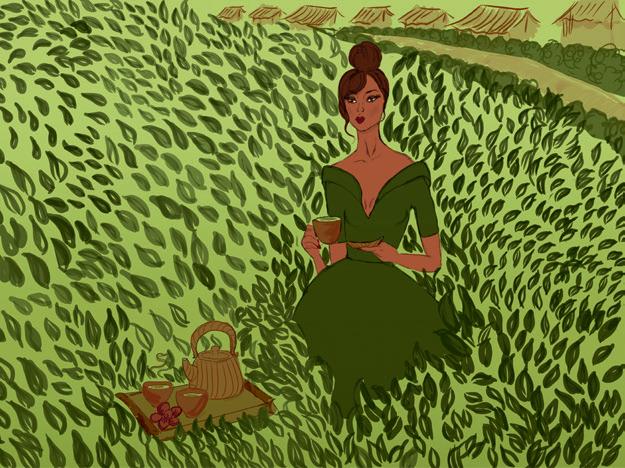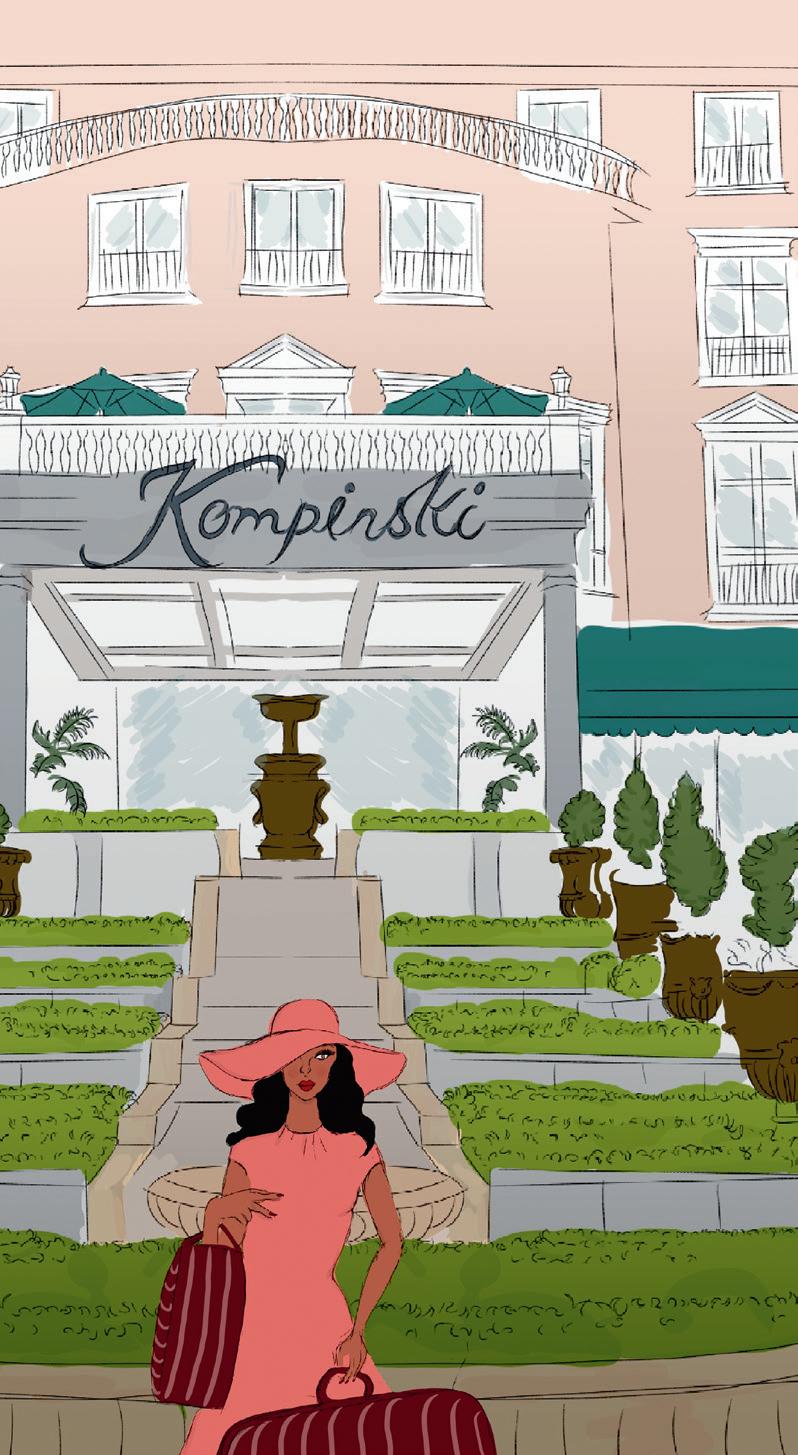
4 minute read
Artist fashioning African stories
Welcome to the elegant world of Phoebe Ouma. The Kenyan artist’s drawings and paintings of lithe, willowy women sashaying through stylised but recognisably African scenes were influenced by a childhood love of fashion magazines and a realisation in adulthood that none of those images featured women of a skin tone that matched her own. Never without a pencil in her hand in her youth, the 23-year-old only started sharing her work online just over a year ago (check out her Instagram account phoebe_ouma), but the response has been huge and overwhelmingly positive with international media and a number of big-name brands wanting to work with her.
The marketing and fashion design graduate has ambitions to turn her sketches into a fashion line of her own, but until then she is keen to carry on telling African stories as an artist. Paa caught up with Ouma recently and here’s what we learned.

She still has the fashion magazine that inspired her aged nine…
“My mum bought me my first magazine in the summer of 2005, we were at Walmart [Ouma’s family moved to the US when she was four]. I just loved the girl on the cover, I didn’t really care for the stories inside. It was a visual feast for my eyes. It was a bridal magazine. I still have it up to this very day. I moved back to Kenya in the fall that year and reread that magazine for years. I didn’t own another magazine for a really long time until I moved closer to Nairobi and my cousin bought me a second-hand Vogue from a flea market. I think I liked how it was a combination of so many creative ideas. I continually discovered something new whenever I read it.”
It took a school friend to make her realise all her early work featured white women…
“I used to have a box of coloured pencils, about 12 in total. I had this peach one and I’d colour all of my girls in that tone. I’m embarrassed to say this, but I called it ‘skin colour’ looking back. A classmate in high school asked why all my models were “white women”. I didn’t have an answer, I had to look at myself and why this was the way I saw things.

Nairobi style Ouma's rendering of the Villa Rosa Kempinski hotel
“My first magazine (the bridal one) had no people that looked like me. I wanted to be part of the creative force that put out images that reflected people who looked like me. I wanted to make it a way to love myself and let other people see themselves through my work and appreciate Africa through it.”
She recreates the places in Africa that live on in her memory…
“I feel like I live vicariously through my illustrations in a way. I recreate Kenyan places [among them Giraffe Manor in Nairobi and the Kericho tea plantations] that made an impression on me. Sometimes I see something for a moment and I just want to live in that feeling forever so I go back to that memory and recreate it in my work. I hope somebody else feels that magic as well.”
She likes to work alone…
“I don’t feel comfortable drawing in front of people, maybe it’s the pressure to perform but when I’m alone I’ll use pencil and a black ink pen. Just to put things roughly on paper but even though I plan I’m just as surprised as my audience I really have no idea what the end result will be.”
She adds to her sketches with watercolours and with her tablet…
“I’ll then scan it so I can refine my sketches on my tablet then colour them digitally if I choose not to use watercolours or gouache. I really like exploring as many options as I can. So my tablet, phone, notebook, sketchbook, paint and computer are all part of creating the end product.”
She’s choosy about the brands she works with…
“Whenever I do choose to do an illustration about a brand or a designer, I go for those who have a unique voice and are determined to tell the stories about this continent through their clothes and are making an impact beyond the clothes. Anytime there’s a story that resonates with me as an African person I get really excited. “There are a few projects in the works that I’m not at liberty to speak about because they aren’t complete but I’m so privileged to be collaborating with them and I feel they will play a part in changing someone’s life for the better.”
She sees art and fashion as intertwined…
“I really enjoyed the part of creating the piece on paper and before it’s
actualised into a garment. I’ve worn the beautiful clothes I’d like to actualise, hoping it’s a foreshadow for the future and what I feel about Africa.”
She has plans to run her own fashion label…
“I would love to manufacture in Kenya but ship everywhere, share it at different fashion weeks globally. My line will be a reflection of things I love. I adore classic styles but definitely with the touches that make me who I am.”

African style Ouma's elegant work



